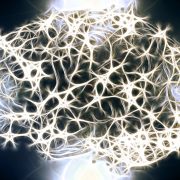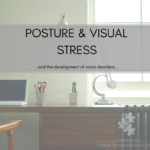Attention Problems:
Are They Due to Vision, ADHD, or Both?
At Nebraska Visual Integration Center, many of the children and adults we see in Vision Therapy suffer from attention problems.
It is very important to understand that if your child enjoys being read to, will sit and listen for long periods of time, but demonstrates attention problems when reading or doing homework, there is an excellent chance that your child’s attention problem is caused by an inability to use his eyes. There is no “biochemical imbalance” which allows children to be attentive when information comes in though the ears, but distracts children when information come in through the eyes. It is not uncommon for problems with visual abilities to masquerade as ADHD.
Similarly, if a child can pay attention for math, but not pay attention for reading, there is no “biochemical imbalance,” which occurs when the child looks at numbers, that then disappears when the child looks at words. In math, excluding story problems, there is less visual information to cope with. The child looks at individual numbers and copies them one at a time. In reading, the letters are crowded together so visual problems can more easily cause the letters to run together. Children who can pay attention for math but lose attention for reading frequently have a visual problem masquerading as an attention problem.
However, if when you read to your child, his attention is better although still a problem, then a number of causes–along with vision–could be contributing to the attention problem. For instance, your child might not understand the words, or there could be some other problem affecting attention. Whatever the reason for your child’s struggle with attention or behavior, untreated vision problems will only increase frustration, trigger behavior problems, and make things worse.
Visual Abilities for Success in School, Sports & Life
At Nebraska Visual Integration Center, our Vision Therapy allows an individual to train and improve these visual abilities:
1. 20/20 Eyesight
This is the best known visual ability. If you have 20/20 eyesight, all it means is that at twenty feet, you can see the same letters that people with normal eyes can see at twenty feet. Unfortunately, 20/20 eyesight–with or without new glasses– does not mean that during reading, computer, or desk work you can see clearly for more than a few minutes. Having 20/20, does not mean you can “sustain focus,” enjoy reading, have depth perception and localization skills to drive at night, or that you are free from vision-caused headaches and general fatigue. All 20/20 eyesight guarantees is that you can see clearly long enough to call out the small letters on a dotor’s eye chart. In addition to “20/20 eyesight” we have to consider other visual abilities often ignored during routine eye exams.
2. Eye Teaming
Using the two eyes together as a team is the second visual ability. We have fourteen eye muscles. The brain must coordinate these muscles perfectly if we are to see comfortably and efficiently. If this coordination is reduced as in Convergence Insufficiency, eyesight can be clear at times, but blurred or double at other times. When eye teaming is inaccurate seeing is inaccurate. Eye teaming is a direct measure of how vision affects our attention and this lack of efficient eye control can cause a child to be mislabeled as having ADHD. The effort to prevent such blurred or double vision can cause premature fatigue, or loss of attention and comprehension during reading, desk or computer work. Certain types of eye muscle coordination problems can reduce depth perception for driving and sports. In more severe cases, poor eye muscle coordination can cause crossed eyes (Strabismus) or lazy eye (Amblyopia).
3. Eye Tracking
Accurate eye tracking allows a person to quickly and precisely move their eyes across a line of print to look at the symbols (numbers, letters or words) and process the written text for meaning. During reading, poor eye tracking causes loss of place, confusing one word with another, careless errors, and problems breaking words down into their parts. A common adaptation of poor eye tracking is the use of a finger as a guide when reading. This may help serve as a crutch for eye tracking, but will slow down fluency and restrict peripheral vision of upcoming words reducing anticipation of the text. Appropriate eye tracking also allows us to accurately move our eyes when tracking a ball in a variety of sports.
4. Eye Focusing
Eye focusing, also known as accommodation, is a visual skill that allows us to have clear focus when looking at targets up close, as well as when shifting focus from close to far. Close to far focus is necessary when looking from the board back to desk notes in class. Eye focusing strongly overlaps with eye teaming and plays a large role in maintaining attention during visual tasks. If eye focusing is poorly controlled, it can increase the time it takes to copy notes and make it extremely difficult to maintain concentration and attention on sustained up-close tasks.
5. Eye-Hand Coordination
The visual information taken in through our eyes helps to guide our hands with fine motor or “little” coordination and gross motor or “big” coordination. We need “little” coordination to copy sentences and keep words equally spaced and on the line. We need “big” coordination to throw or catch a ball or to guide a steering wheel. The “big” type of eye-hand coordination is also very much linked with balance and general coordination.
6. Visual Perception
“Visual Perception” is the ability to organize visual images and ideas and to understand what is seen by the eyes. It’s useful to help understand how things are alike and different and how the pieces fit together to make up the whole. At one extreme we have the artist who can look at a scene and “see” the relationships between the shapes and colors well enough to reproduce them with paint on canvas. On the other extreme we have the child who cannot tell the difference between a “b” and a “d” or “was” and “saw”. Visual perception problems can make it difficult to recognize words, complete puzzles, align columns in math or–for adults– read a roadmap.
7. Visualization
Visualization, or Visual Imagery can be explained as, “seeing with the mind’s eye.” If visualization is good, a child or adult can “see” words in the mind to spell them. They can “see” the story when they are reading. They can picture their goal in their minds and they have the ability to picture the consequences of their actions. Visualization allows us to learn from the past and plan for the future. All reluctant readers should be tested for these important visual abilities.
The Solution
At Nebraska Visual Integration Center, we work with children and adults in Vision Therapy whose attention problems are caused by vision. If a child who has vision problem affecting attention in school is never diagnosed, chances are they will not outgrow it, but rather simply become an adult with a vision problem affecting attention in the workplace and life. Vision therapy treats the vision problems that interfere and prevent an individual from functioning at the highest level which can impact learning, attention, and behavior. Some patients may have vision problems that mimic learning disabilities and may be misdiagnosed and this is where specialized vision testing is necessary and very important. Other patients may have co-existing vision problems and learning disabilities where the visual issues should still be addressed.
Our Vision Therapy office in Omaha specializes in testing, diagnosing and treating these visual issues. If you have any questions about Vision Therapy and how it may impact your/or your child’s life, please call our office at 402.502.0043 or email us at [email protected].









